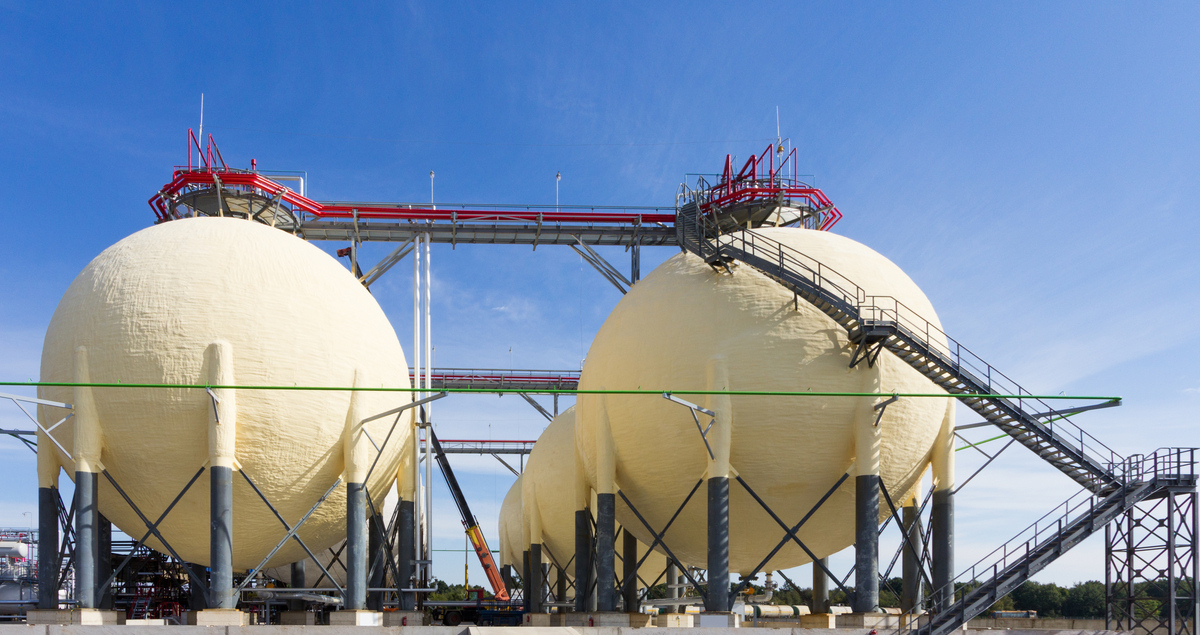Ammonia – a fuel of the future?

Like hydrogen, ammonia can play a key role in decarbonising Europe’s heavy industry and transport. So why isn’t it grabbing the headlines in the same way?
In the battle to reach net-zero by 2050, one thing has become clear: there is no single solution to get us there. Our best chances lie in fast-tracking a mix of no- or low-carbon technologies and fuels. Alongside renewables, carbon capture and hydrogen and many others, one candidate has so far been hiding in plain sight: ammonia.
Ammonia burns CO₂-free and is a common, widely produced chemical. As a fuel, it can enable a circular economy in which it can be stored, shipped, used and converted back into its constituent parts: nitrogen and hydrogen.
But while hydrogen’s popularity as a clean fuel essential for reaching net-zero emissions is growing across Europe, ammonia is still thought of as little more than a key chemical for fertiliser. This needs to change.
Both hydrogen and ammonia will be required if Europe is to successfully decarbonise heavy industry and transport.
Ammonia’s promise
Ammonia could help with decarbonisation in multiple ways.
It is typically produced by catalytic steam reforming from fossil fuels, generating around 1% of global CO₂ emissions. But it can also be synthesized by combining nitrogen with hydrogen produced carbon-free using renewable electricity.
By commercialising this renewable production of ammonia, the first sector to benefit from the resulting decarbonisation would be the fertiliser industry itself – and with it the food production supply chain.
Ammonia can also hold its own as a fuel: not only does it burn CO₂-free like hydrogen, but it has a higher energy density and is easier to store and transport than hydrogen, as it doesn’t require cryogenic storage.
Ammonia can also act as a storage medium for hydrogen, enabling it to be transported over longer distances more easily. In Japan, it is already considered the most viable carrier for hydrogen.
Both as a fuel in its own right and as a carrier medium for hydrogen, ammonia makes an effective candidate for use in the shipping industry. It can provide sufficient energy for long-haul voyages – though it’s worth bearing in mind that it still has a higher volume than the heavy fuel oil (HFO) currently used, affecting its storage footprint on a ship.
And ammonia’s potential goes beyond heavy transport. Speaking at Euractiv’s virtual conference on ammonia, Tudor Constantinescu, DG Energy Principal Adviser for the European Commission, said: “Just three big tanks of 20,000 cubic metres of ammonia could store as much energy as 1.8 million stationary batteries installed in homes.”
Challenges ahead
If ammonia is such a fantastic fuel for the energy transition, then why isn't it talked about in the same glowing terms as hydrogen?
One concern is that ammonia is toxic and flammable. And while there are existing standards and procedures, the required handling skills are not commonly known outside of sectors that already use ammonia and its derivatives. Ammonia also produces nitrogen oxides (NOx) at a time when the likes of the International Maritime Organization are putting tight restrictions on such pollutants.
Another challenge is that the production of green hydrogen through electrolysis powered by renewable electricity is not yet of a scale to be viable compared with conventional fossil feedstock and therefore so is the production of green ammonia. Most ammonia today is produced from natural gas.
Expanding renewable production of ammonia overall and reducing the associated costs – in conjunction with hydrogen – will be critical to achieving this and closing the competitiveness gap with fossil fuels.
While initiatives are underway to develop renewables-powered ammonia production, other approaches may be needed to bridge the gap until the technology matures.

Boosting ammonia’s role in decarbonization
As the EU’s hydrogen strategy and Japan’s global Green Ammonia initiative show, to develop the market for carbon-free ammonia, it will be critical to also develop low-carbon synthesis as an interim step. This is because as policymakers stimulate demand for ammonia, sufficient supplies are needed to meet this demand while renewable production ramps up.
The low-carbon approach combines traditional ammonia synthesis using natural gas with carbon capture and storage (CCS). CCS will ensure that the majority of carbon dioxide is syphoned off before it hits the atmosphere and is subsequently either stored or used as a feedstock for synthetic fuels and chemicals. That would be part of Carbon capture, Utilization and Storage (CCUS) value chain.
In this way, demand can be boosted and met with adequate supplies until renewable methods are mature – and economically viable – enough to take over.
Alongside this, ammonia as storage for renewable electricity and a carrier for hydrogen needs to be developed to scale, and its viability when compared to other storage options – such as cryogenic or pressurized hydrogen or organic hydrogen compounds – needs to be determined.
And as with hydrogen, the ammonia supply chain and infrastructure need to be developed beyond that which the fertiliser industry already has in place, putting it within easy reach of potential future users.
Strong regulation favouring green ammonia is needed now to drive the necessary technical developments – regulation and technology must evolve in parallel. And, as ever, Europe must seek to embed its activities within an international context and work across stakeholders to speed up ammonia’s market readiness.
Discover more about how ammonia can help decarbonize transport





